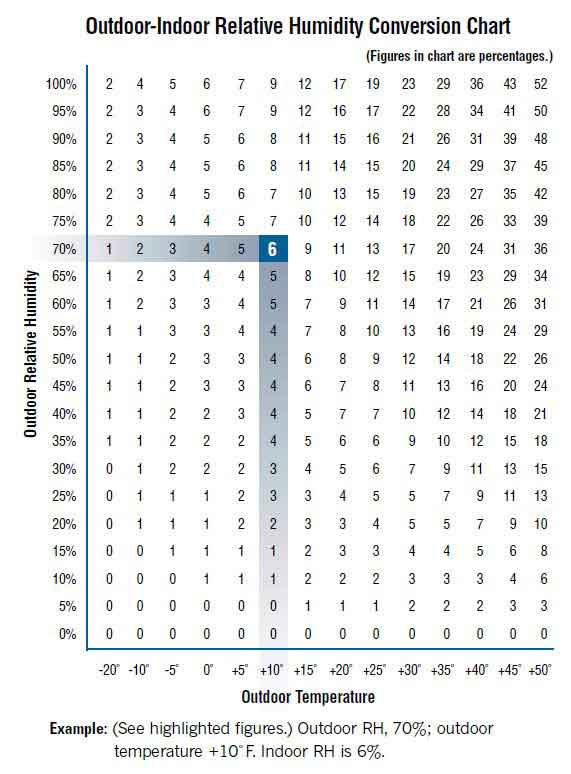It’s 35 degrees outside and raining.
That’s basically the most miserable weather scenario I can think of. Too warm to be snowing, too cold and miserable to be outside; cloudy, dark, and raining. Yuck. Hope your HVAC humidifier is running. Otherwise you’ll be dry as a bone inside.
Now hold up a second there you might ask, “How does that work?” It’s 100% humidity outside, but bone dry inside the house; this doesn’t add up. How can that be possible?
AprilAire is one of the most forward thinking humidifier manufacturers I’ve seen. They have a fantastic resource here. In explaining the relationship of outside temperature and humidity to indoor humidity and temperature, they make the following crucial observations:
- Air exchange: The speed at which the air in a home is replaced (“exchanged”) is far faster than anyone realizes. In a tight home, the entire air volume of a home is exchanged with the outside air in 2 hours. Average and loose construction homes are even faster of course. Surprised?
- The cold air that comes into the home is heated and becomes “dry.” It’s not that it’s really “dry;” the change is the temperature. Warm air has a much higher capacity to hold evaporated water, which is why it is “dry.”
- Since the entire air content of your home is being exchanged at a minimum of 8 times a day, there’s a lot of air getting heated. This will make your home very dry during the winter.
To better understand this phenomenon, see the table below, provided from the AprilAire reference guide.

As you can see from the chart, when +35 degree air, even at 100% humidity (raining outside) is brought into the home and heated to 70 degrees, the RH of that air will drop to 29%.
Let me spell that out a little more: If it’s 35 degrees outside and raining, your home inside (eliminating any possible added humidification) will be 70 degrees and 29% Relative Humidity. That’s dry. Your wood flooring warranty requires 35% or higher.
Really though, 35 degrees and raining is nothing.
Let’s look at the first week of January 2014 in Cedar Rapids, IA. It was cold. In fact, using some rough math, it averaged 7.46 degrees that week. Being that cold, RH numbers are usually higher, and we’ll estimate an average RH of 80%.
Using our Aprilaire chart, we can see that air heated from 5 degrees and 80% RH to 70% will drop to 6% RH. You’re living in an environment that is drier than the Sahara desert.
Would you believe, in addition to sucking all your body fluids directly from your skin, that this kind of extremely dry environment might suck the moisture out of your wood floors? Well, it does, and it does some sort of serious damage, which we’ll discuss in the next post.
This is the second in a three-part series on wood flooring in the winter. Read part one and part three. Bryan is the regional manager for our Northern store locations and has been with The Master’s Craft for 10 years.

